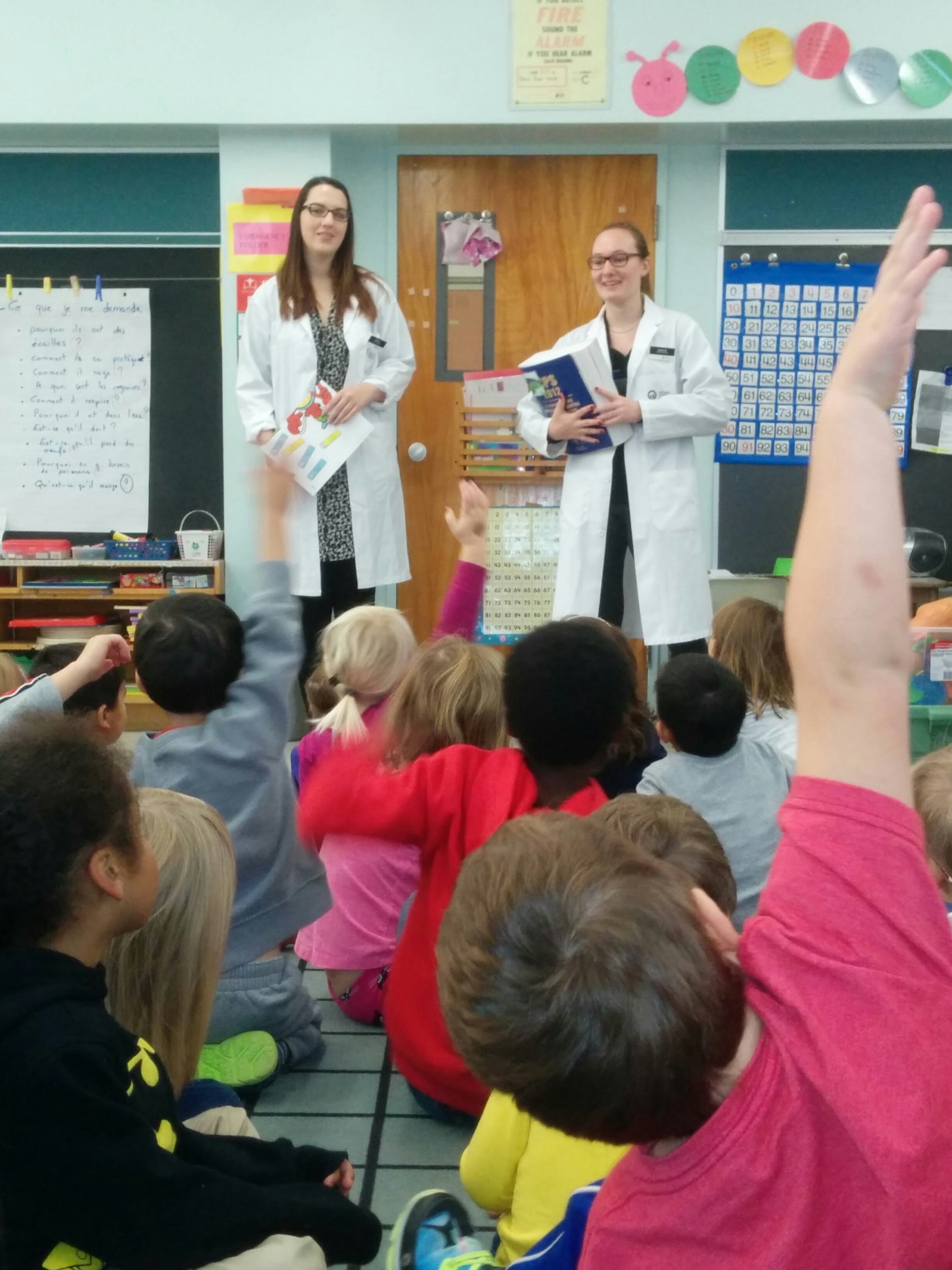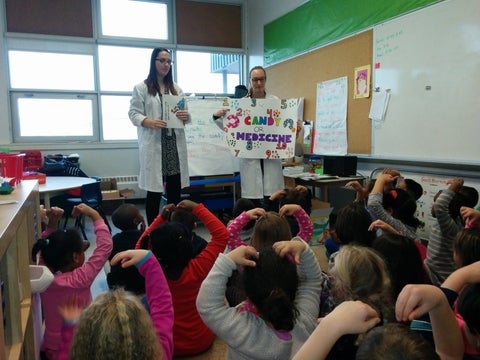Candy or medicine? The difference between bright coloured pills and tasty treats was the subject of much discussion when pharmacy students Sarah Blythe and Katie Gammage reached out to the community as part of the Canadian Pharmacists Association (CPhA) Kids and Medicine program.
Running workshops for the Kids and Medicine program
Blythe and Gammage were co-op students employed in Winter 2015 by CPhA in Ottawa. As part of their work term, they led two student workshops for Kids and Medicine, a program aimed at students in kindergarten to Grade 3. Kids and Medicine connects pharmacists and pharmacy students with classrooms to promote safe use of medications and spread awareness about the role of the pharmacist in the community.

“It felt great to reach out to the community!” said Gammage. “It was amazing to see how interested the kids were in pharmacists and medicine safety and it was nice to get the chance to hear and answer their questions about medicine.”
Second year students Blythe and Gammage presented at Vincent Massey Public School, instructing and entertaining an audience of kindergarten students.
“This was a very interactive presentation where students could learn and share their experience with medicine, talk about their allergies, stay safe… and ask about what pharmacists can do to help people,” commented Bettina Desbordes, a senior kindergarten teacher in the early French immersion program at Vincent Massey.
Made possible through educational grants from Pfizer and Scotiabank, the Kids and Medicine program is designed to cater to young audience and is tested by teachers, students and pharmacists across the country. But the program benefits more than just the audience; as Blythe indicates, it’s an educational experience for presenters as well.
“Presenting Kids and Medicine is a very rewarding opportunity that makes me proud to be a future pharmacist.”
Creating Content at CPhA
When they’re not in the classroom spreading awareness about medication safety, Blythe and Gammage were busy researching and writing at CPhA. Both were members of Public and Professional Affairs department. Blythe developed monthly issues of Live Links, a publication that summarizes recent articles on pharmacy practice, and Gammage created The Translator, a quarterly online publication that examined four new studies on pharmacy research and explores implications on pharmacy practice.
The students also developed resources that CPhA provides to their pharmacist and pharmacist association members. They contributed a variety of publications such as continuing education programs, influenza guides, and documentation on the diverse scopes of practice across Canada. The impact of their work is far-reaching.
“It is amazing to know that the content we help produce will be used across the country even though each province and territory has a different approach to pharmacy practice,” said Gammage.
Co-op terms provide students like Blythe and Gammage with the ability to explore different types of pharmacy practice, whether that means working in an underserved community, in a hospital, or in a professional advocacy and support role like at CPhA. Work terms last 16 weeks and are part of the 48 weeks of co-op experience pharmacy students will have by their third year in the program.
The University Waterloo School of Pharmacy, part of the Faculty of Science, is the only pharmacy program in the country that offers co-op in addition to the clinical rotations that are required of all PharmD pharmacy programs. It is one of only two schools in North America that incorporates co-op into pharmacy education.
